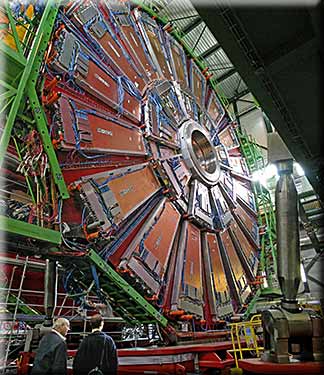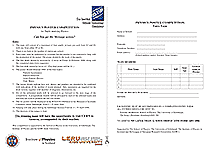|
Physics Poster Competition!
|
|||
|
Click here for the results!
|
|||
|
Win a Trip to CERN's Particle Physics
Laboratories in Geneva  Part of the 12,500 tonne Compact Muon Solenoid experiment |
|||
|
A competition open to physics pupils and teachers from all secondary schools who have ever hosted the SCI-FUN Roadshow, as well as those who recently attended our LERU Kids' University week.
|
|||
|
|
|||
|
We want teams of up to four pupils (S4–6; see the rules below) to design an A1 poster under the guidance of their physics teacher, on one of the following topics:
Particle Accelerators, Particle Detectors, Neutrinos, Dark Matter A draft copy of the poster (as two A4 sheets – one describing the overall story of the poster, the other giving an overview of the layout and design, and showing the placement of diagrams and photographs – should be sent to us by Friday 24th February, with a completed entry form. We'll pick six drafts, and invite those teams to produce their final posters, all six of which will then be displayed at the Edinburgh International Science Festival 2006, at the Royal Scottish Musuem (SCI-FUN's venue). The winning poster will be chosen during the Festival, and the winning team (with their teacher) will have the opportunity of travelling to the CERN particle physics research laboratories, based in Geneva, Switzerland (at a date to be determined). For more information about CERN, click here. |
|||
|
How to Enter
|
|||
Remember, this competition is only open to schools who have hosted the SCI-FUN Roadshow, or who sent parties to the recent LERU Kids' University event at the McEwan Hall. |
|||
|
|
|||
|
|
|||
|
Competition Rules
|
|||
|
|||
|
|
|||

